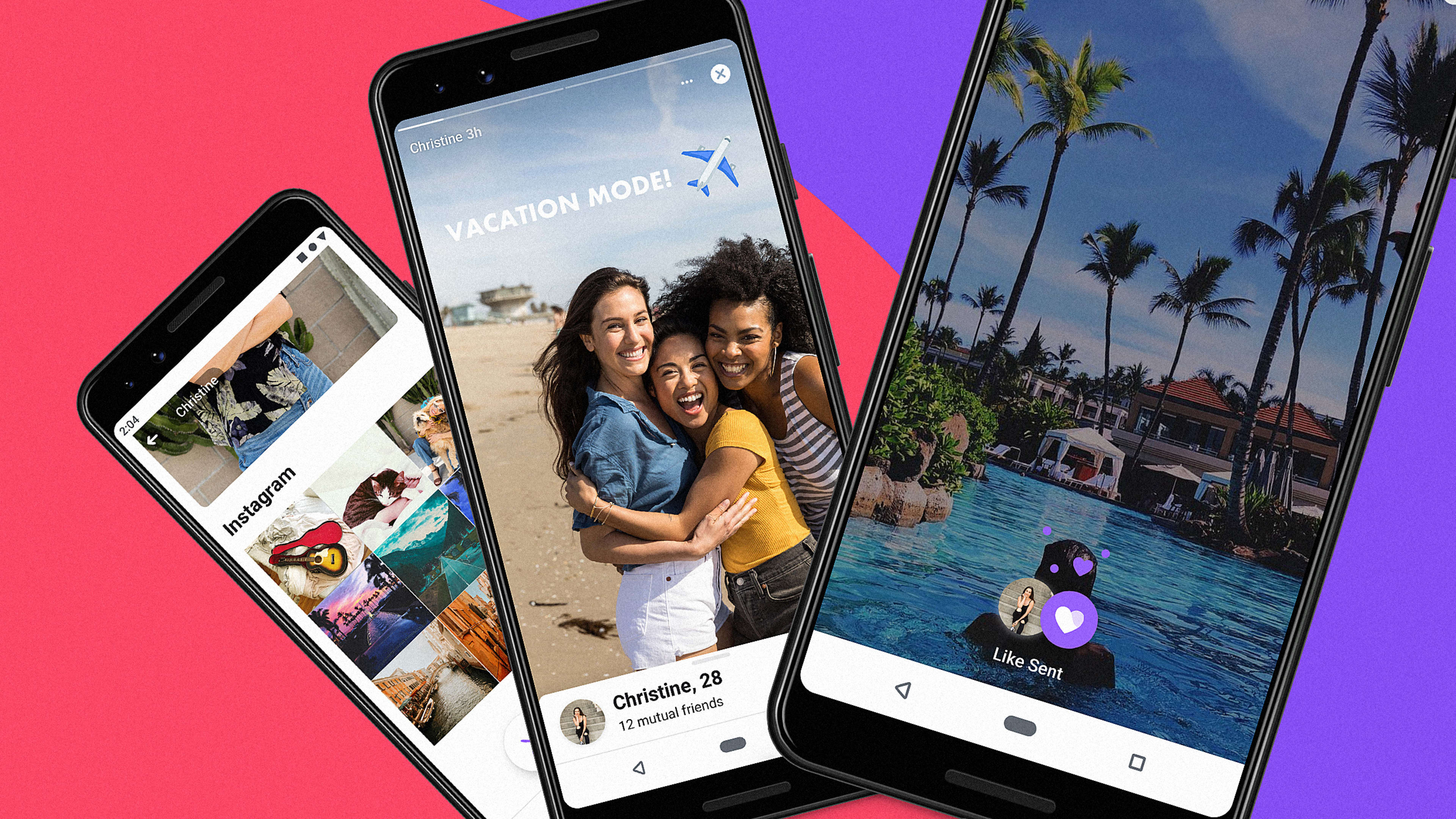In spring 2018, Facebook announced that it was launching its own version of Tinder—but designed for people who are interested in meaningful relationships. Now, after rolling out in 19 countries including Colombia, Thailand, and Canada, Facebook’s dating service is available in the United States.
Instead of the rapid-fire swiping found in many dating apps like Tinder and Bumble, Facebook Dating users have to tap into each profile before they can “pass” on someone or express interest by sending them a message (there is no mutual interest necessary for someone to start a conversation, which could cause problems for women who already face harassment and unsolicited messages on dating apps). The company’s algorithm selects matches for you based on location—which you verify using location services on your phone—along with your stated preference and interests that you’ve indicated on Facebook. The service is entirely opt-in, for people ages 18 and over, and you won’t ever be matched with your friends.
The company’s goal? “We want to make sure people remember that there’s people behind profiles, to make it about conversation and not swiping,” says Nathan Sharp, the product manager for Facebook Dating. “We wanted to bring out all the best elements of meeting in person.”
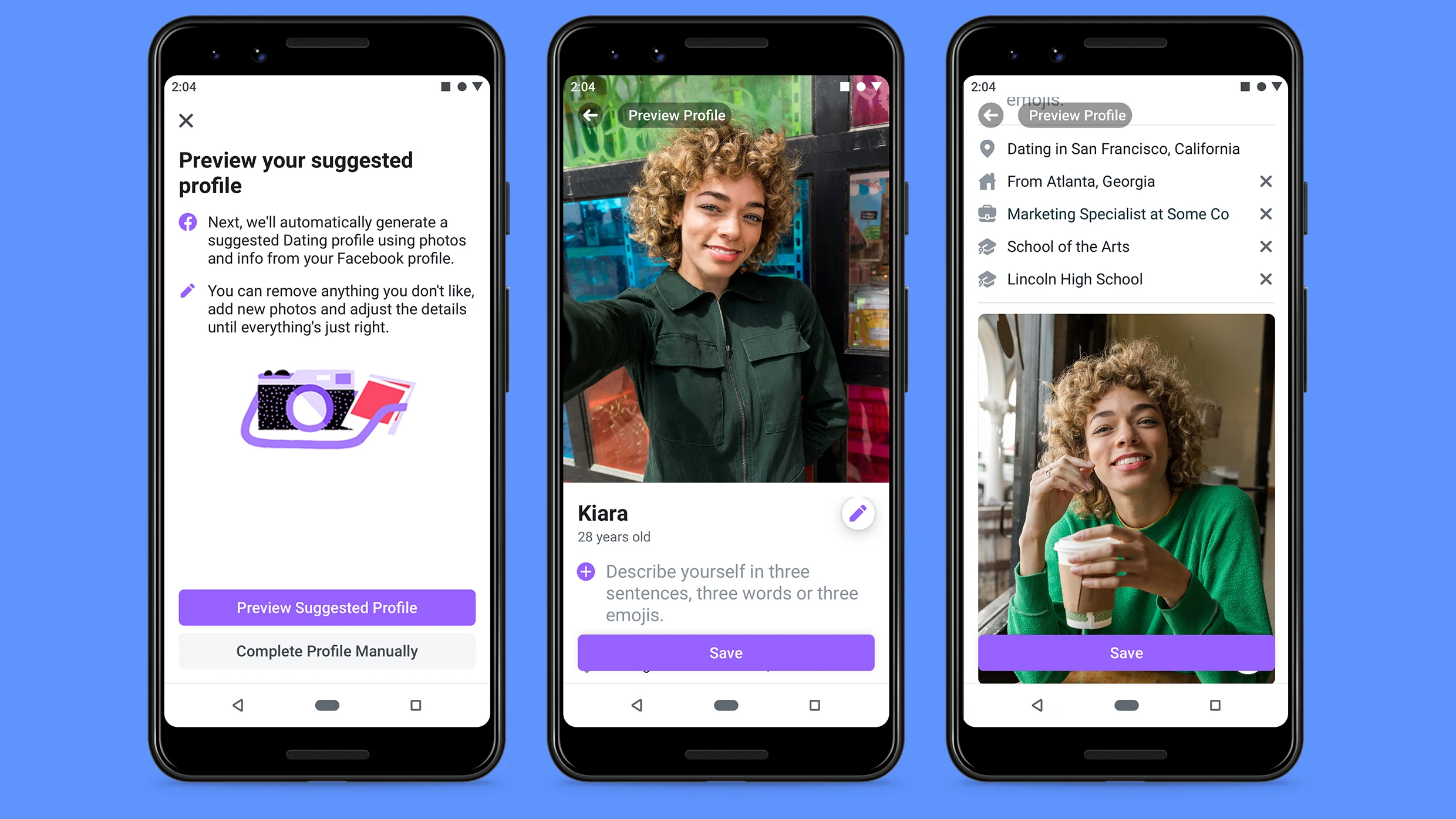
A key element of helping people get to know potential matches is Instagram. For the U.S. launch, Facebook Dating will enable you to include photos from your Instagram feed inside your dating profile, and by the end of the year, users will be able to directly add Instagram stories to Dating as well, allowing potential future matches and people you’re already conversing with to be able to get a sense of the slightly less filtered version of your life. “We think it’s incredibly important to go where people are and allow them to bring all of these different networks and types of content to help them get the things they’re trying to do done,” says Fidji Simo, a vice president at Facebook and head of the Facebook app.
By integrating Instagram and Stories into Dating, Facebook is also making a play for the younger users that tend to prefer Instagram—in other words, it’s using Dating as a Trojan horse to bring them back to the core Facebook app. “What we are seeing is that [Dating] does tend to skew a little bit younger,” Simo says. “We welcome the addition of Instagram because there are a lot of younger users of Instagram, who have built a lot of profiles and followers there.”
Third-party sources indicate that Facebook use is on the decline for young people in general. A 2018 survey from Pew Research that polled 4,594 people found that 44% of people ages 18 to 29 had deleted Facebook from their phones in the last year. A 2018 report from the market research firm eMarketer projected that the number of U.S. Facebook users ages 18 to 24 declined by 5.8% in 2018, continuing a trend that younger users are starting to prefer Instagram to Facebook.
While younger users have been moving toward Instagram, the Facebook app has seen declines more broadly as well, according to external reports. According to the Washington Post, research conducted for Facebook by Nielson found that between 2016 and 2018, Facebook users across all demographics were using Facebook about 10% less in any given month compared to the same month the previous year. Edison Research also found that Facebook usage had declined for the first time in 2018 since the market research firm started tracking its user numbers in 2008. In response to the question of whether Facebook Dating is an attempt to curb the declining use of the Facebook app, as shown by these third-party reports, Simo said: “Usage of the Facebook app is actually really good at a high level. We are happy with the trends.”
Declining usage numbers help explain why Dating is integrated directly into Facebook’s app (though not its desktop experience), making it into another tab similar to its Marketplace, Groups, and Watching products, unlike the stand-alone apps common among many major dating services in the United States, including Tinder, Bumble, and OkCupid.
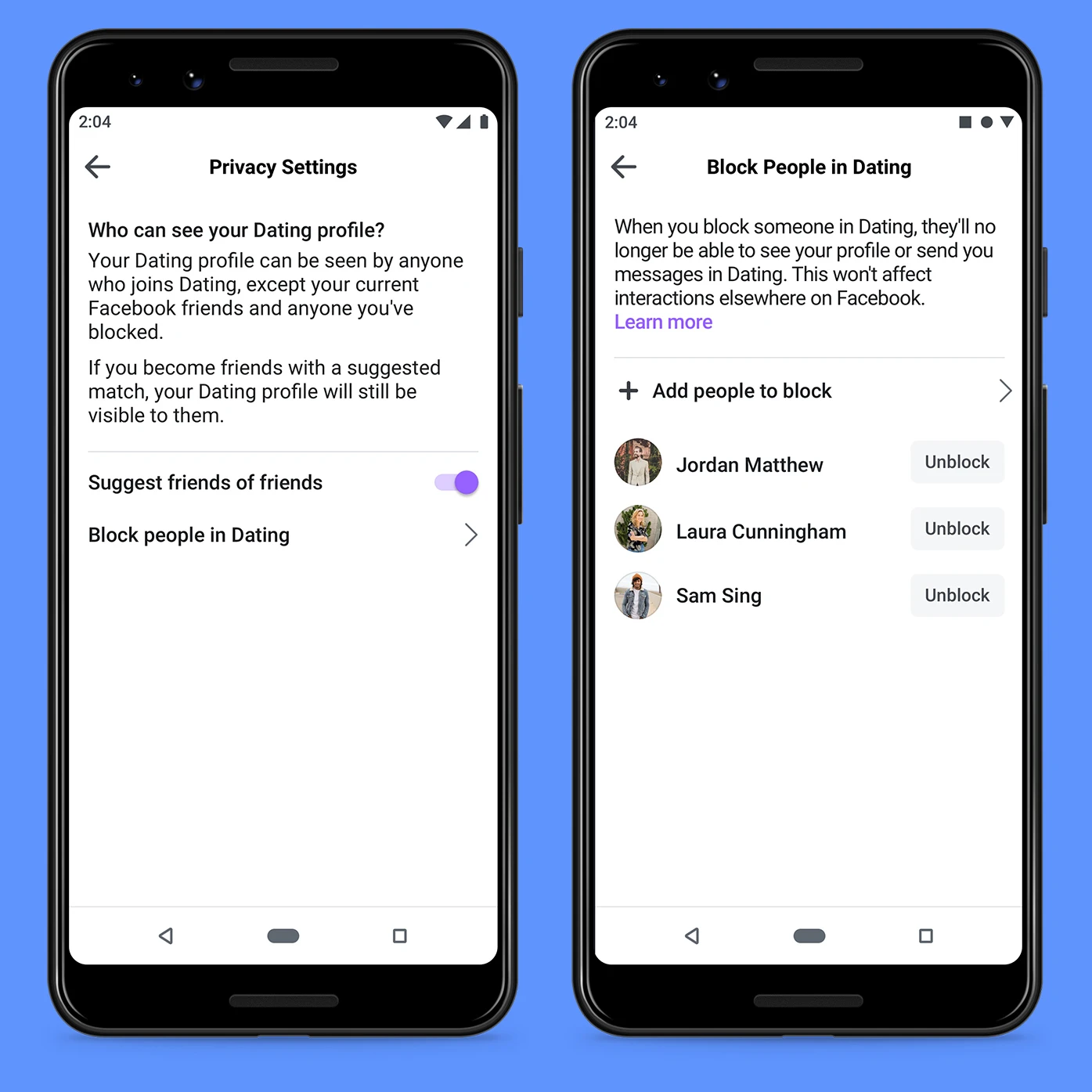
However, the company has taken pains to create an entirely separate experience for Dating, including a separate profile (since people want to portray a different side of themselves on a dating profile versus a regular Facebook profile) and separate message thread (so that you don’t accidentally send a flirty message to your aunt). Facebook also says that none of your activity on Dating will be used for advertising, based on people’s feedback about privacy (something Facebook has historically failed to provide). Facebook does put that data to use though: Information the company collects on you will be used to inform future matches that it shows you.
Despite its claims of wanting users to trust that their Dating profiles and data will never be integrated with their regular Facebook profile, the company stopped short of creating an entirely separate app—something Simo says is due to global users’ lack of phone storage and feedback from users that say they don’t want yet another app to download.
The decision to integrate Dating as a tab continues Facebook’s move to create a wider variety of services that go beyond its News Feed, which has been criticized for its overly sticky design that aims to keep you scrolling infinitely (and viewing as many ads as possible). While Simo says that the reason the company is launching these services is to provide value to users, and that the company doesn’t use engagement or time spent as a metric, I’ve found that these tabs do tend to help keep users on Facebook. When I used Marketplace to sell a rug for the first time recently, I ended up checking Facebook more often as a result—even though I was using the service as a utility.
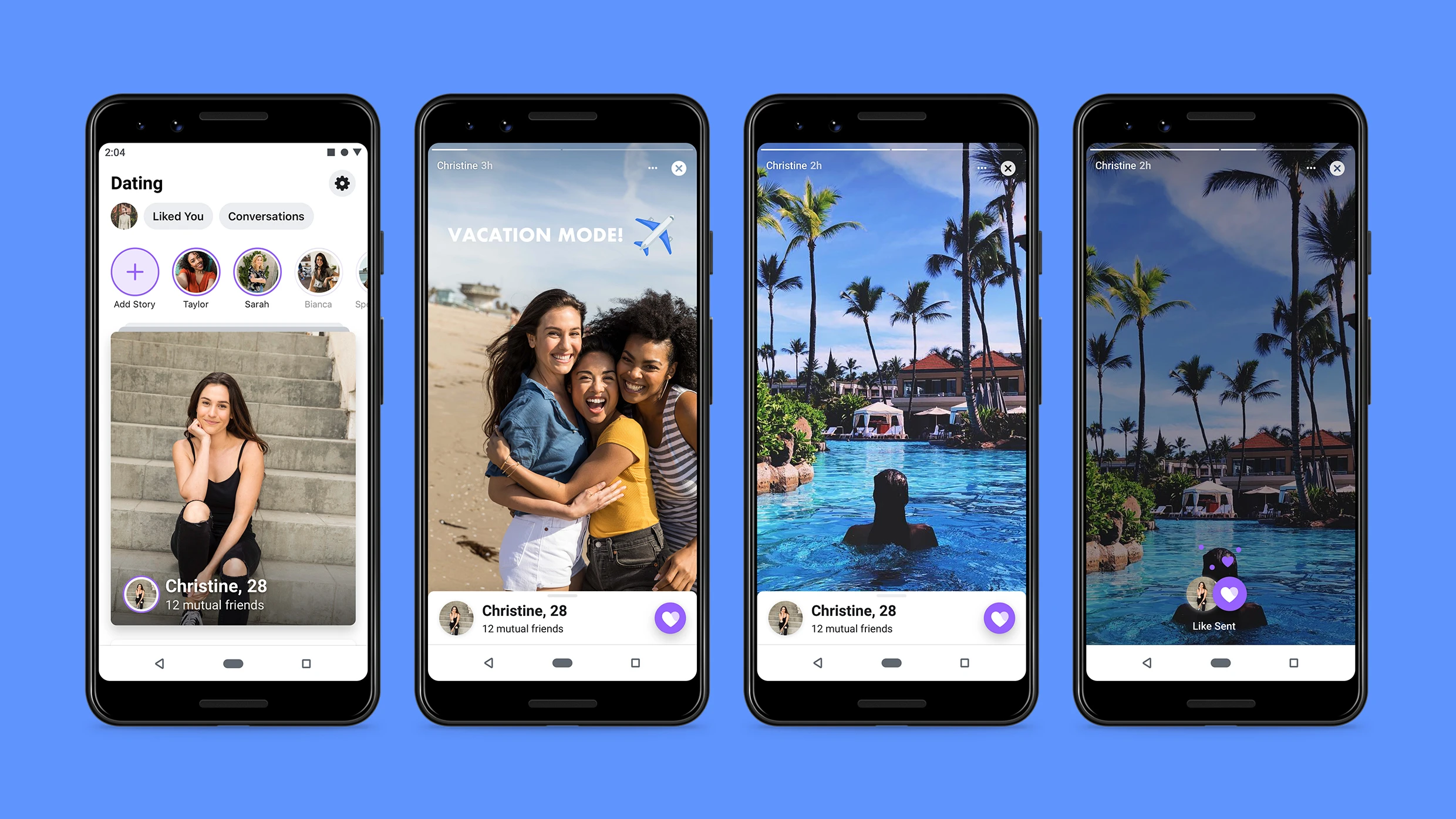
Finding love through Instagram Stories
If Facebook Dating is part of the company’s aim to provide a service targeted more at younger users, then Instagram is a vital part of this strategy—in part because the company thinks that allowing potential matches to get a glimpse into each others’ Instagrams will help make online dating more akin to dating IRL.
If users opt-in to linking their Instagram accounts with Facebook Dating, then they’ll be able to add Instagram photos to their profile, including a nine-image grid of their Instagram profile page to give potential matches a snapshot into their life. You can’t edit what photos show up there: The idea is that you’ll have to show a more “authentic” side of yourself (your profile won’t show your Instagram handle to maintain your privacy). Users will also be able add Instagram followers to Facebook Dating’s “Secret Crush” feature, which enables you to list up to nine different Facebook friends or Instagram followers that you’re interested in romantically; if they also list you, then Facebook lets you know and starts a message thread.
Instagram Stories will arrive in Dating by the end of this year, differentiating Facebook Dating from any other dating app. “What bringing stories to the platform means is that you don’t just tell people about your interests, you can actually show people your interests,” says Sharp, who started his career at Facebook in 2016 and was the product manager that launched Instagram Stories. “I was so excited to launch [Stories] because it offered a more authentic window into people’s lives. We think that exact dynamic is something that can bring daters together, too.”
Stories will show up for anyone Facebook presents to you as a potential Match, whether or not you’ve accepted them. Sharp envisions this as another way for you to screen through potential matches. “Online dating often becomes a series of static profiles that you’re . . . saying yes or no to,” Sharp says. “The beauty of Stories is you can see people over time.”
Sharp calls this idea progressive intimacy: In the real world, you might meet someone several times in different situations before deciding you want to go on a date with them. That’s very hard to replicate online. But Instagram Stories might be the closest thing yet. “We think that this authentic snapshot is one of the big bets we’re making to make online dating much, much better,” Sharp says.
The integration of Instagram isn’t surprising. People are already dating and finding significant others on the platform, Simo says. Among younger adults, it’s often more comfortable to share an Instagram handle with someone you’ve just met than a phone number, which feels more private. The early stages of dating are already happening in Instagram DMs.
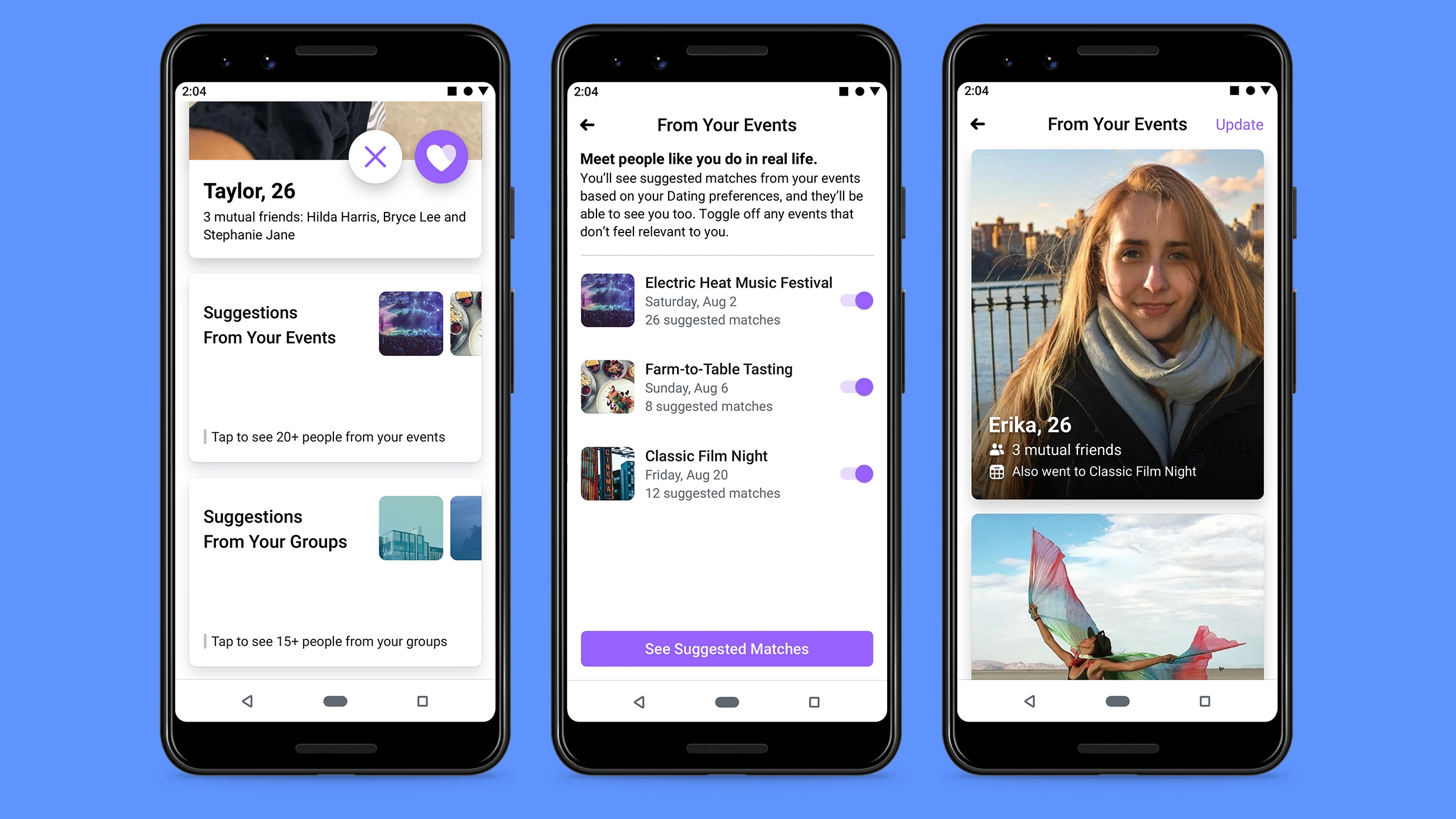
Facebook does have some other advantages over traditional dating apps as well: It knows a lot about what you’re interested in. In Facebook Dating, users can opt-in to receive matches based on groups they’re a part of or events they’re going to (or have been to in the past). By matching you with people who are also planning to attend the same events as you in the future, Facebook is helping to facilitate ready-made dates.
Facebook says it will only use information that you’ve publicly shared on your profile, the preferences you provide during the sign-up process in terms of what you’re looking for, and what Sharp called “interest signals” to create matches. For instance, “If you and another person attended the same college, but haven’t listed that [on Dating], we’d still use that as a signal of mutuality, though [Facebook] wouldn’t share that with the other person,” he says.
Because Dating is just launching in the U.S. today, Americans haven’t had a chance to try it out yet. However, early feedback from other countries has been mixed. A Canadian writer found that she was inundated with messages because Facebook Dating allows any potential match to send you a message, even if you haven’t indicated interest—which could be unpleasant for female users, who tend to face more sexual harassment online. Facebook has tried to curb harassment by designing the service so that people can only send a single opening message and can’t contact the person again unless they respond, limiting messages to only text and GIFs (no photos, links, payments, or videos), and even including the ability to send a close family member or friend your location when you go on a date to help women feel safer meeting a stranger for the first time.
Facebook Dating, which shares the same community standards as the primary platform, also has a stricter policy for people who violate these standards: one strike and you’re out. If someone reports you for harassment, you’re banned from the platform instantly (there is an appeals process as well, since the language people use when flirting can be nuanced).
It’s these kinds of features that Facebook will have to get right to attract users to Dating—and to help bring more, younger users to the Facebook app. Instagram might get them in the door, but they’ll need to have a good experience to stay.
Recognize your brand's excellence by applying to this year's Brands That Matters Awards before the early-rate deadline, May 3.
